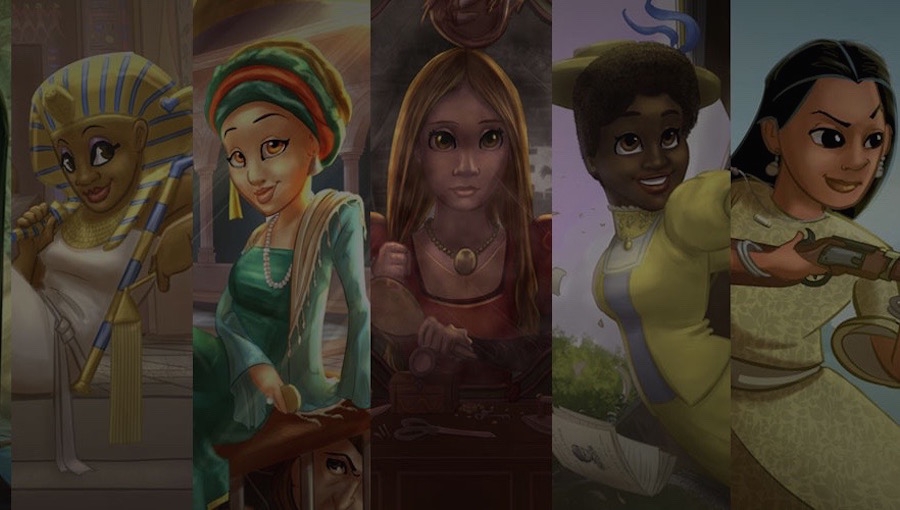Where has Jason Porath’s Rejected Princesses: Tales of History’s Boldest Heroines, Hellions and & Heretics been all my life? I wish this book had been around when I was a young teen; to have been able to read about extraordinary women who overcame adversity and made a positive contribution of some kind that could inspire would have been divine. As the adage goes, better late than never!
Traditional historical accounts have maligned and portrayed women in a diminished capacity, a shadow of their true role, or worse, has banished them altogether from history. Thanks to a lunchtime conversation with colleagues at DreamWorks Animation in which the question was asked “Who is the least likely candidate for an animated princess movie?” Porath brought up names of individuals he had learned about through binges at Wikipedia. He was surprised that his coworkers were not familiar with them, and that’s when Porath realized this knowledge gap needed to be rectified.
Little formal training in art and history did not stop Porath from assembling a few entries and posting them on his Rejected Princesses website. The concept resonated with the right folks and was picked up at Huffington Post, NPR, and a number of other media outlets. It was what he was hoping for, and the idea of a book was born. In all, Porath has included 100 women of note in Rejected Princesses. Given his need to “learn on the fly” for illustrating and research, Porath has successfully created a book that should be on every child’s bookshelf, in libraries, and given as gifts. Thinking ahead, Porath anticipated that some of the women’s stories might require mediation by an adult, so he included two rating – or marker – systems: the first measures maturity level (think G, PG, PG-13, and R) and the second marker denotes content themes (violence, abuse, sex, rape, and self-harm). The markers are easy to read and are included at the beginning of each entry. At the end of the book, he encourages readers to visit his website, where he has additional entries that did not get included in this book – I think he should be thinking about a second volume! – and Porath acknowledges those who helped him along the way and for making entry suggestions. And, there is a bibliography in which he references his source materials.
As a person who feels they are a fairly enlightened reader, admittedly there were several women I had never heard of, so I found this book to be both educational and entertaining. Porath writes with a sense of humor and wit – according to his website, a few have been critical of his tone; however, given the seriousness of the content, a lighthearted voice provides a balance between the two. In certain entries, it’s honestly needed, because many of these women have been subjected to violence and abuse. Hence, the material should not be discounted. In fact, Porath solicits corrections so he can fix errors he has made during his research and/or his illustrations, obviously looking to put the record straight for women throughout history.
Each entry is typically 2 – 4 pages and is accompanied by an illustration that Porath has created. Occasionally, he will include “Art Notes” which is a section that describes certain elements he has included in his illustration, and he’ll include footnotes identifying potential discrepancies. The individuals in this volume are a nice mix of classical to contemporary women from around the world. Although Porath is self-depreciating about his qualifications for doing this subject justice, he has done just that. This is truly a beautiful book, one that he should be proud of and congratulated on for being dedicated to honoring and giving voice to women who might not have ever been heard from again.

